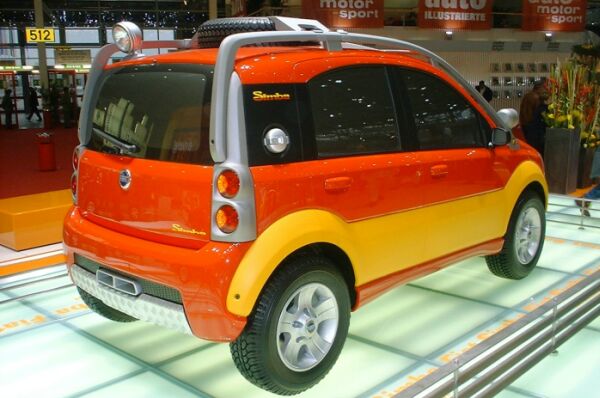
23.04.2003 NEW TRENDS IN FIAT DESIGN
| NEW TRENDS IN FIAT DESIGN
Development procedures for the new Fiat design Fiat design has undergone a radical intellectual and conceptual change and can now call on powerful, cutting-edge IT tools such as the Fiat Style Centre Reality Centre. The heart of Fiat's design development process takes the form of a huge screen where virtual images of 3-D mathematical models are projected at very high resolution and quality. Ultimately, it is just like looking at a real model. With this extremely realistic type of visualisation, all tests carried out on style models and master models are extremely useful because they indicate the best style options and give accurate information for correcting mathematical models. All design stages are involved in the Reality Centre process. After an initial style research stage that includes assessment of 2-D sketches, the mathematical models are processed. Once this stage is complete, the specifications of the new concept are assessed in the Reality Centre. The system's suggestions for subsequent changes to the mathematical models can now be screened through a precise process of analysis. This procedure is repeated several times until the designers are happy with the style concept. The end result amounts to practically the same thing as analysing a physical 3-D model. This cutting-edge procedure allows the designers to work on several style models simultaneously and thus to come up with major virtual presentations, all with optimised style and engineering parameters, within a short space of time. MAXIMUM QUALITY FROM THE FIRST STYLING STAGES One of the basic aims of Fiat's new design philosophy is to focus on styling process quality and quality applied to the final product. The greatest care is taken during the transition from style models to master models and, lastly, production models. The entire model quality improvement process centres around the use of the Reality Centre. The key to this process lies in refinement of master model class A mathematical models through continuous visualisation of the various modelling stages. This approach produces class A mathematical models of great quality because the surfaces can be tessellated to an extremely high level for an outstanding perception of problems associated with the mathematical model. The system also suggests specific changes for modellers, who are able to assess the results of their work at the next virtual check. During model visualisations at the Reality Centre, technical aspects can also be discussed with designers who are aware of the effects of certain problems on Style and category A mathematical models. |
 |
| <<< |